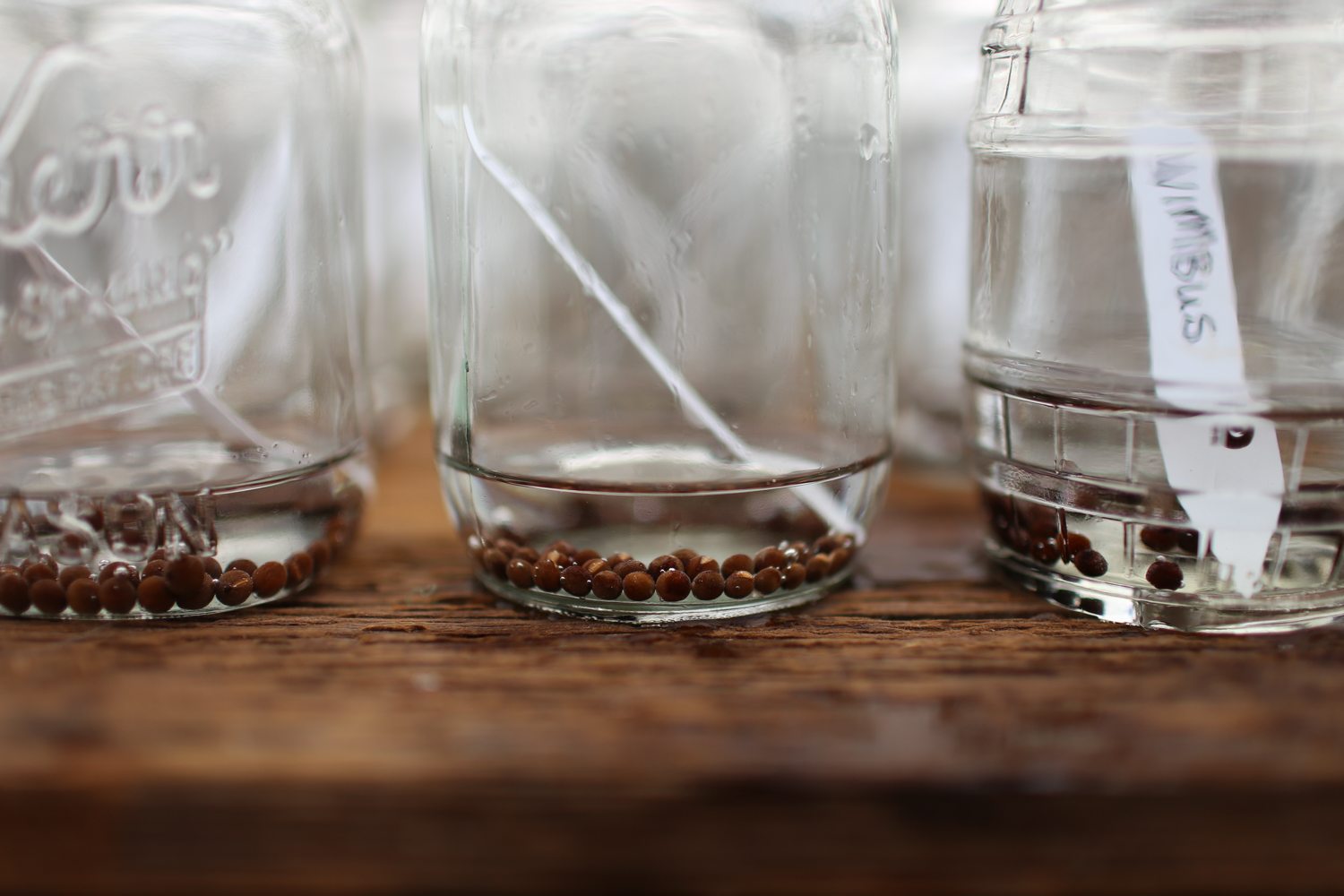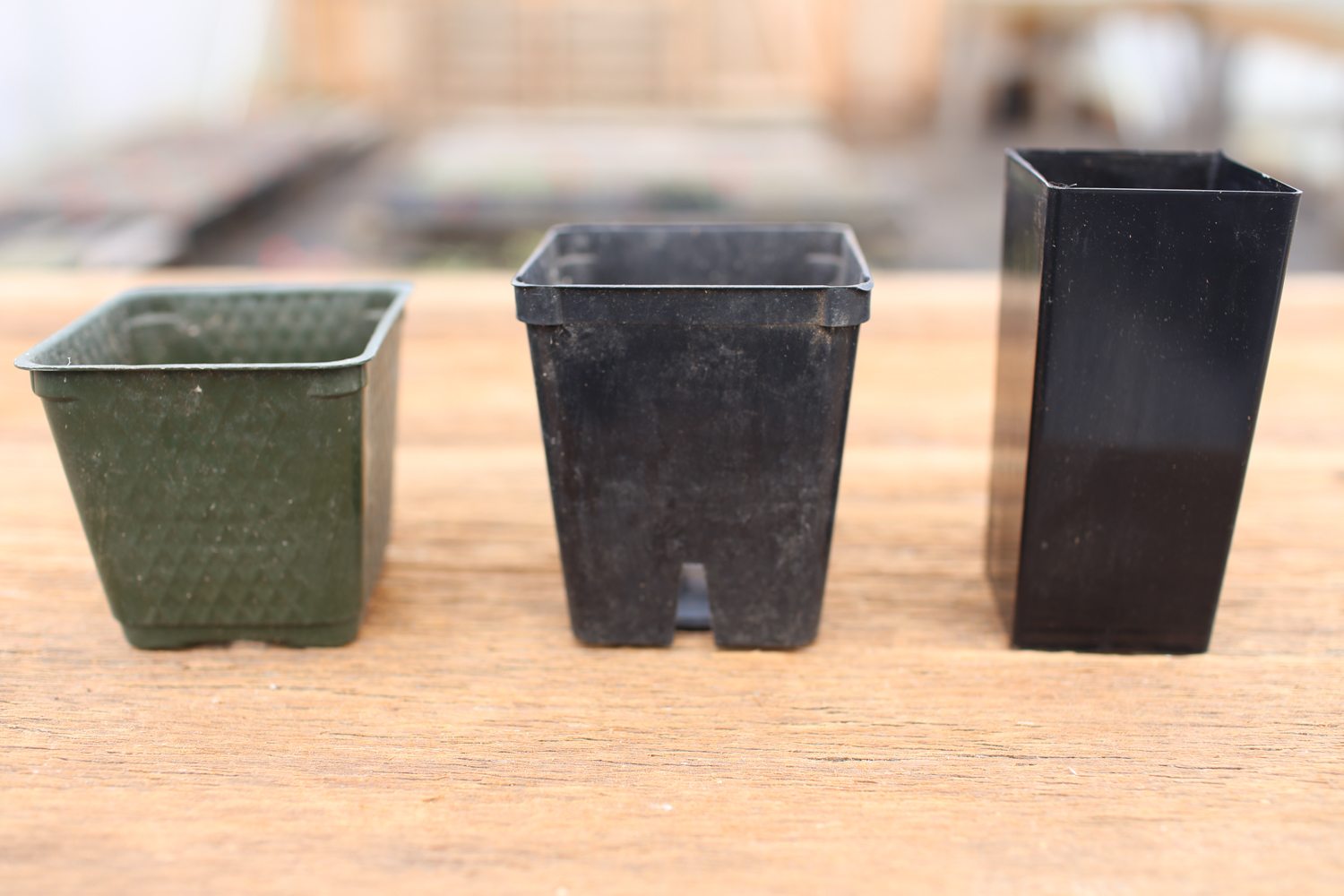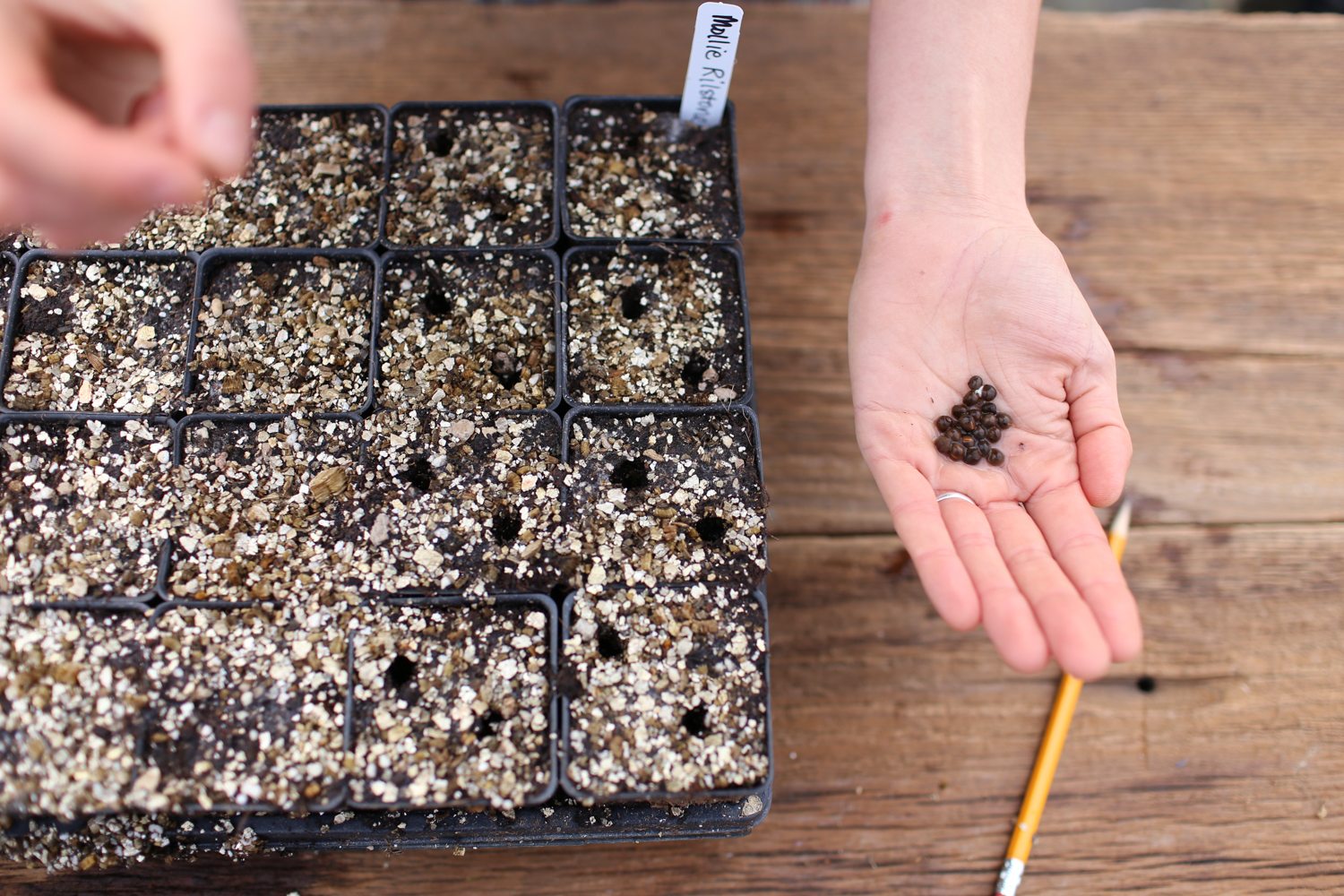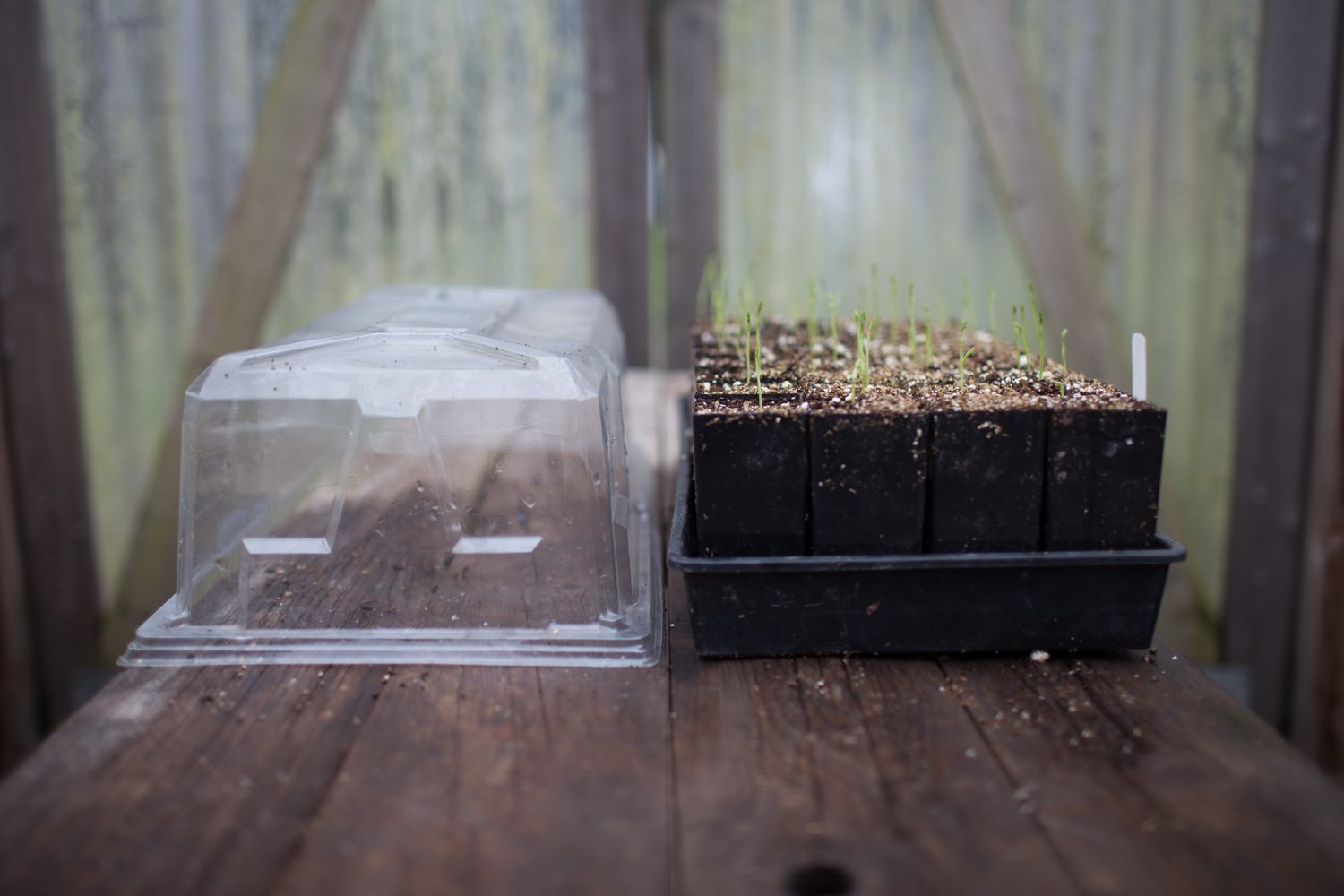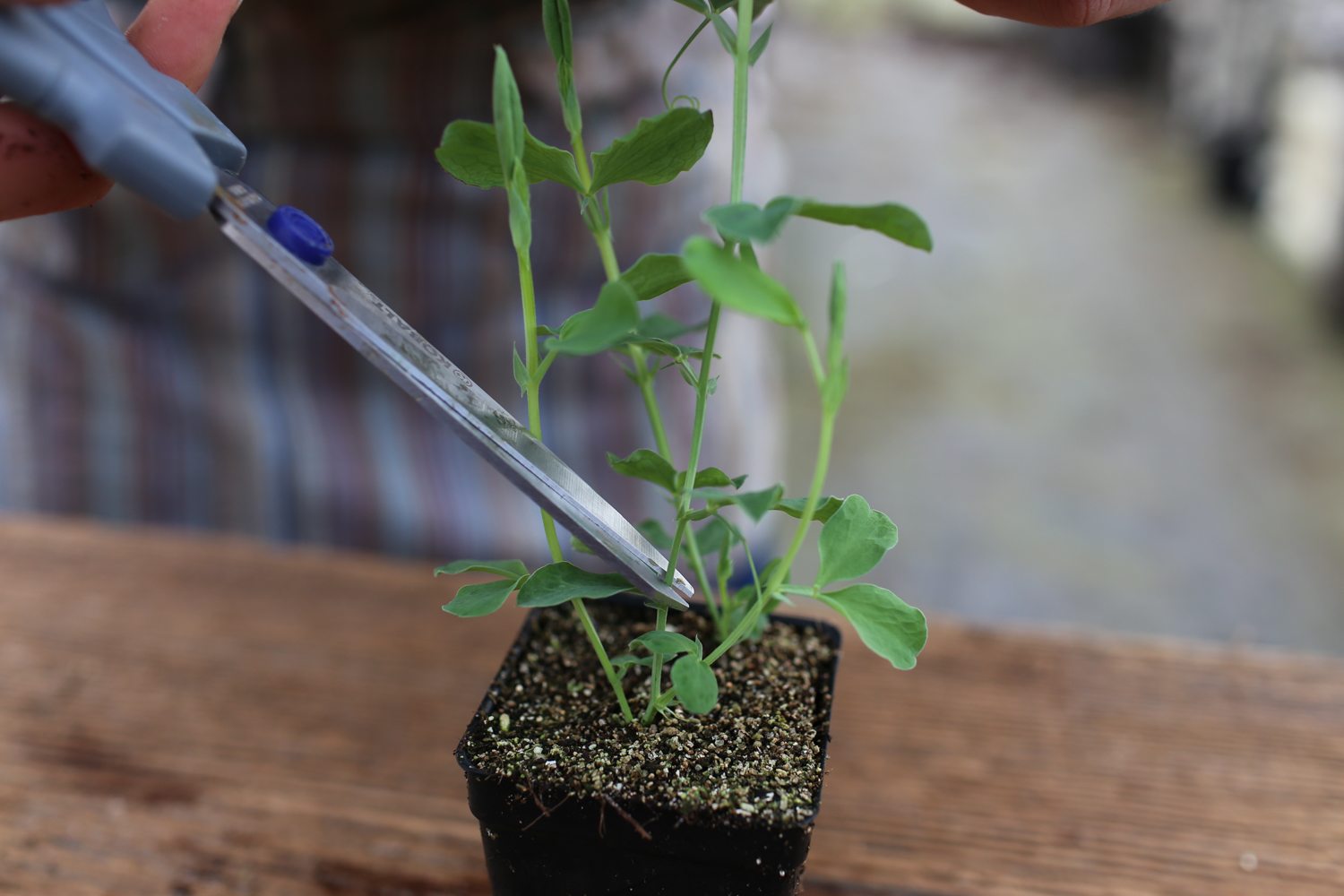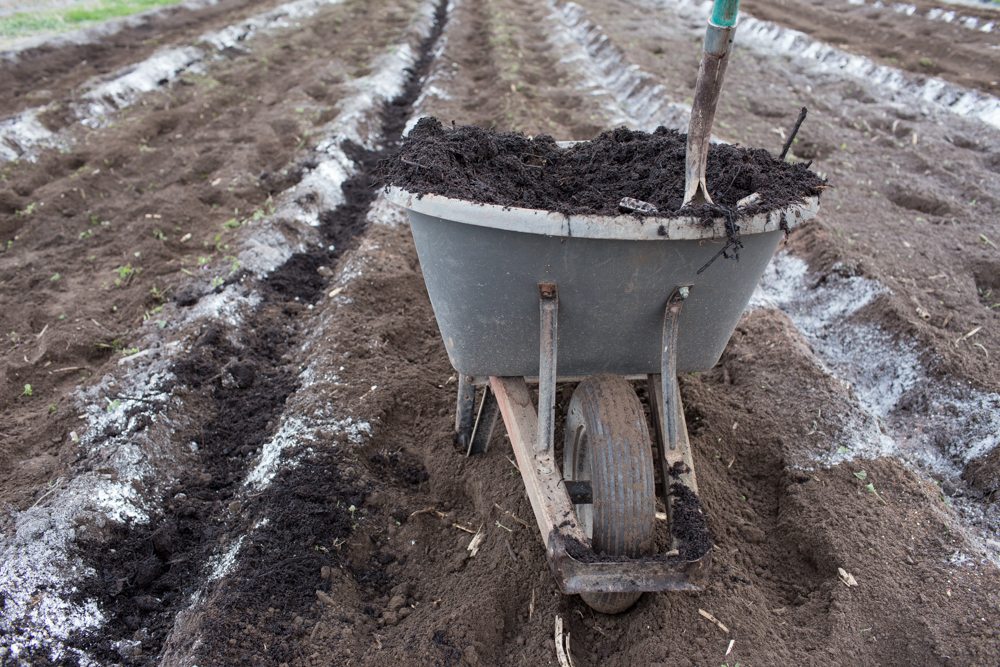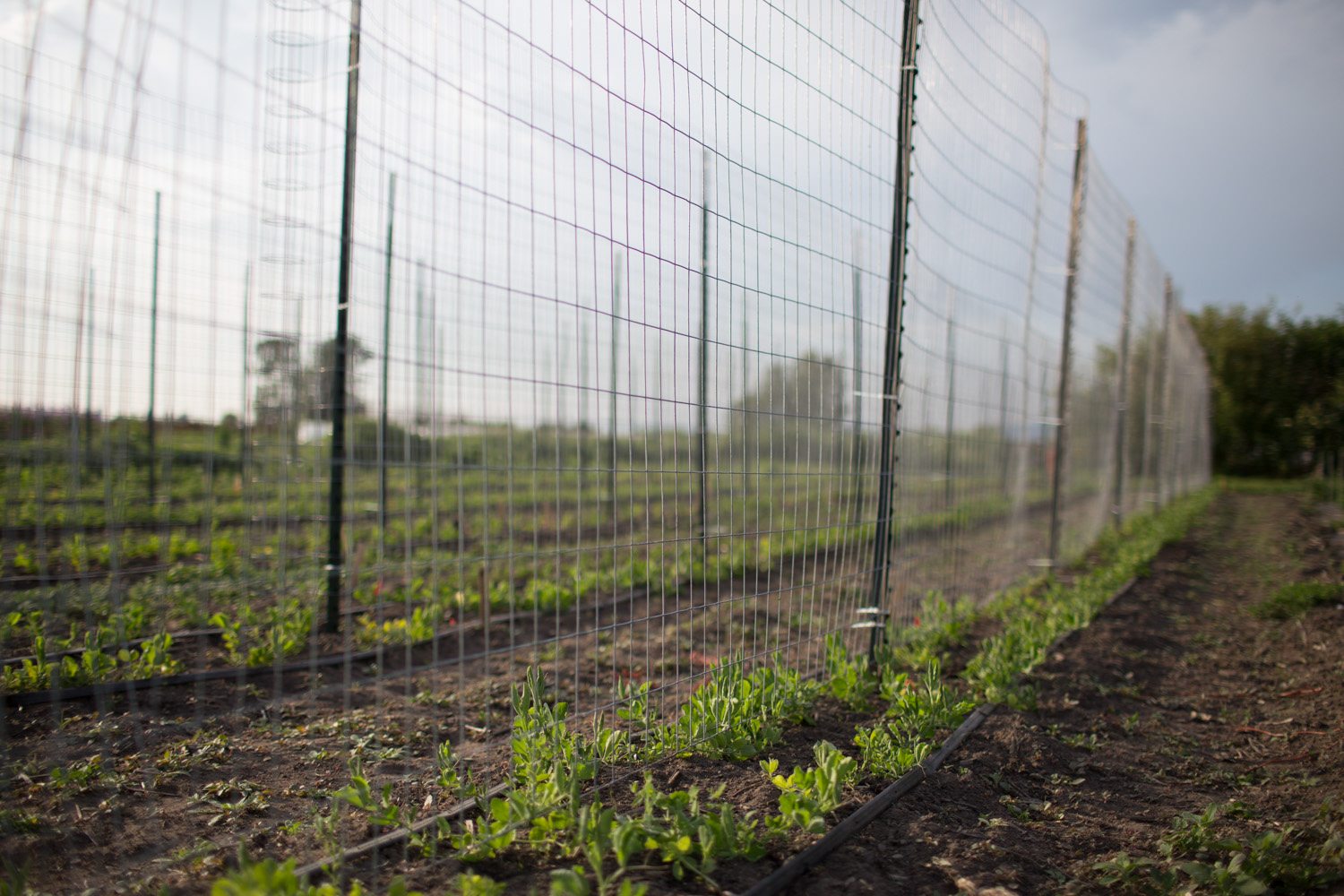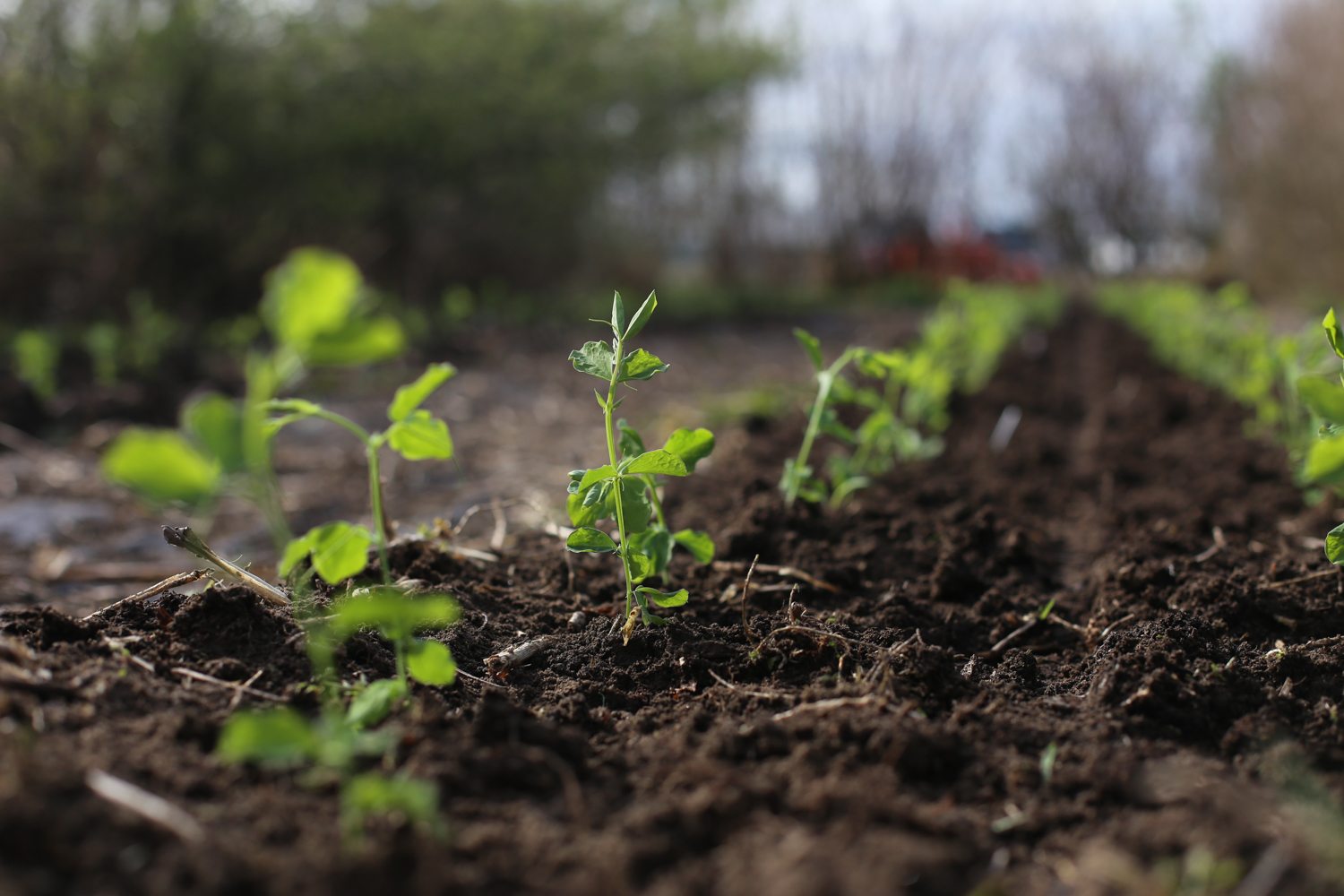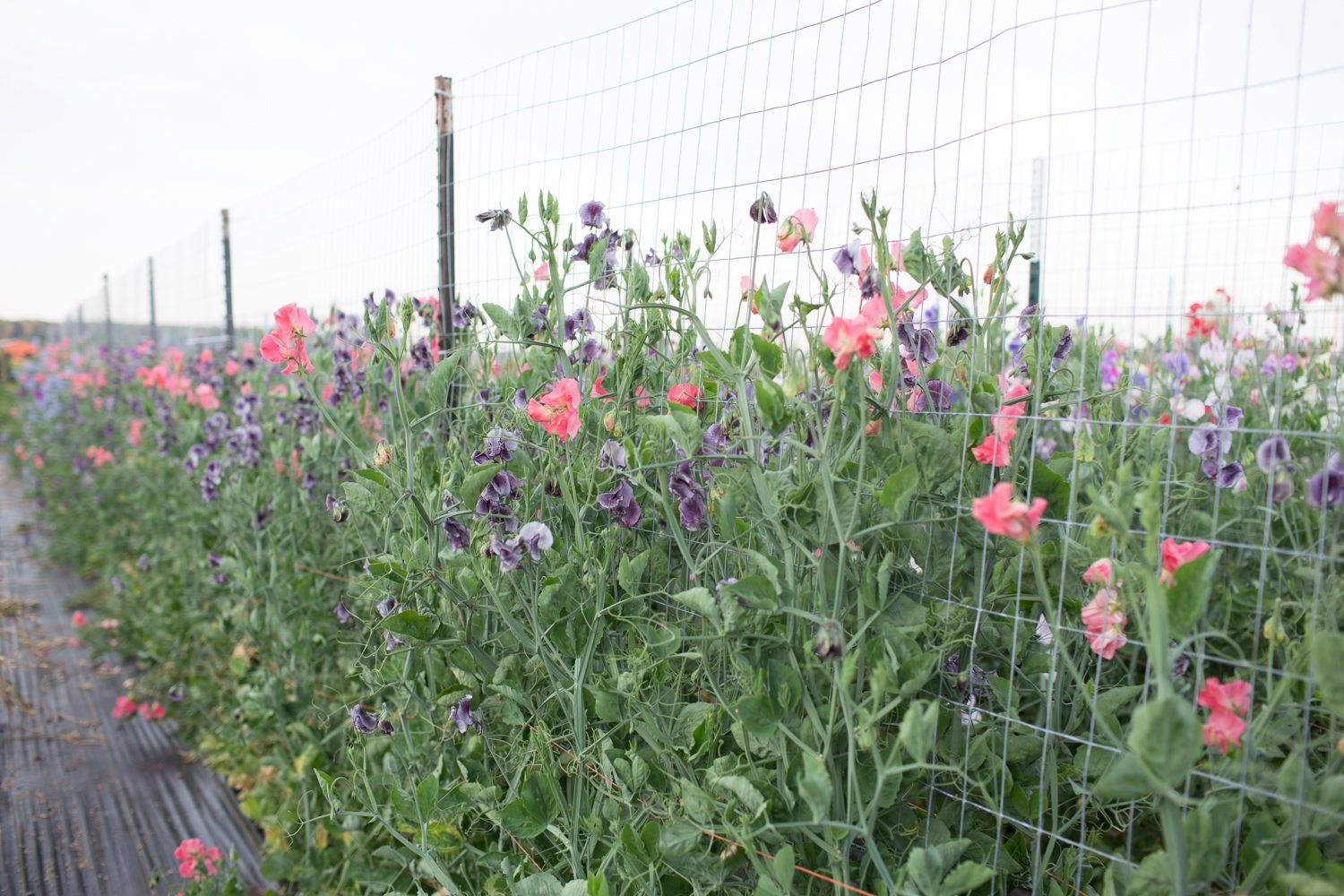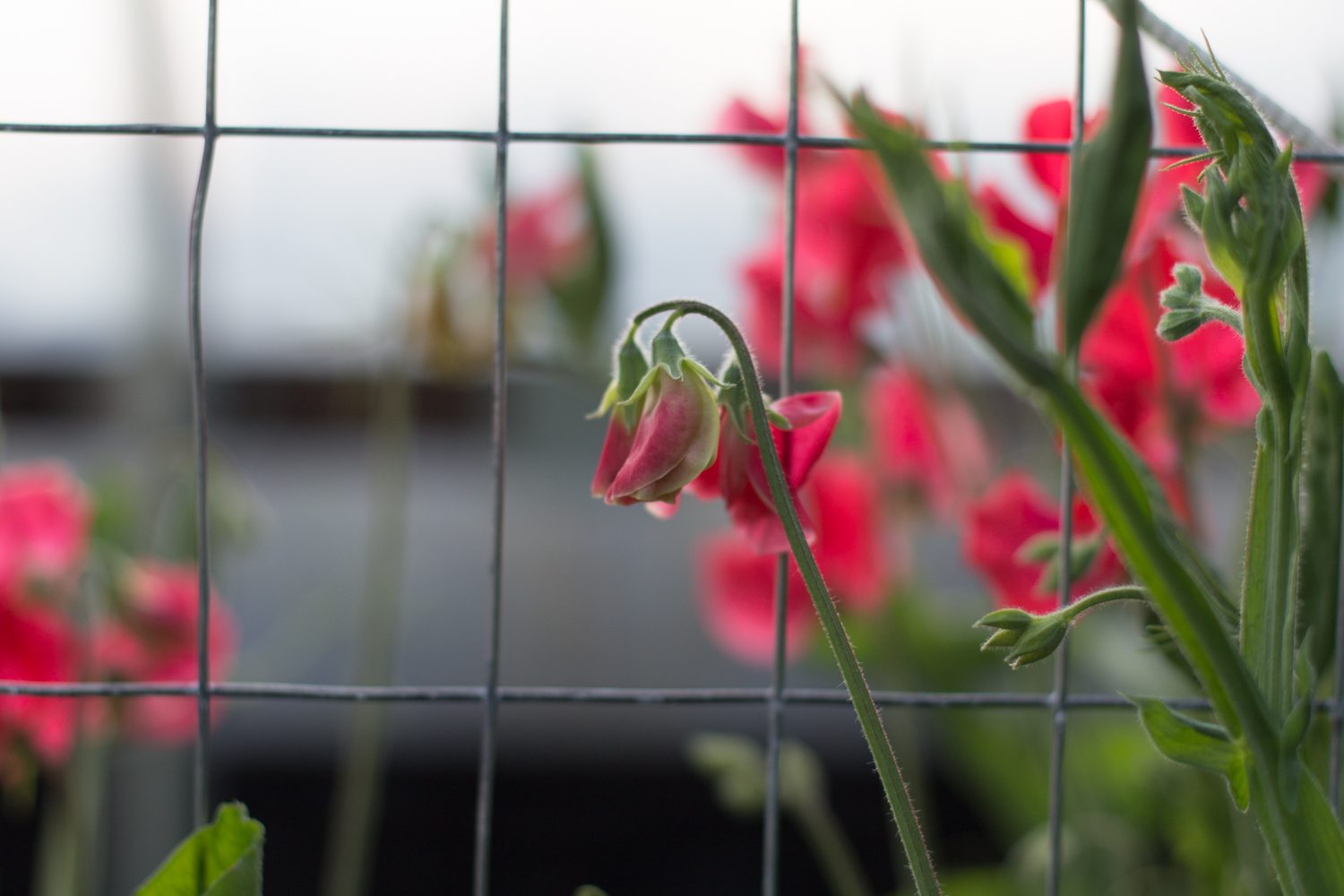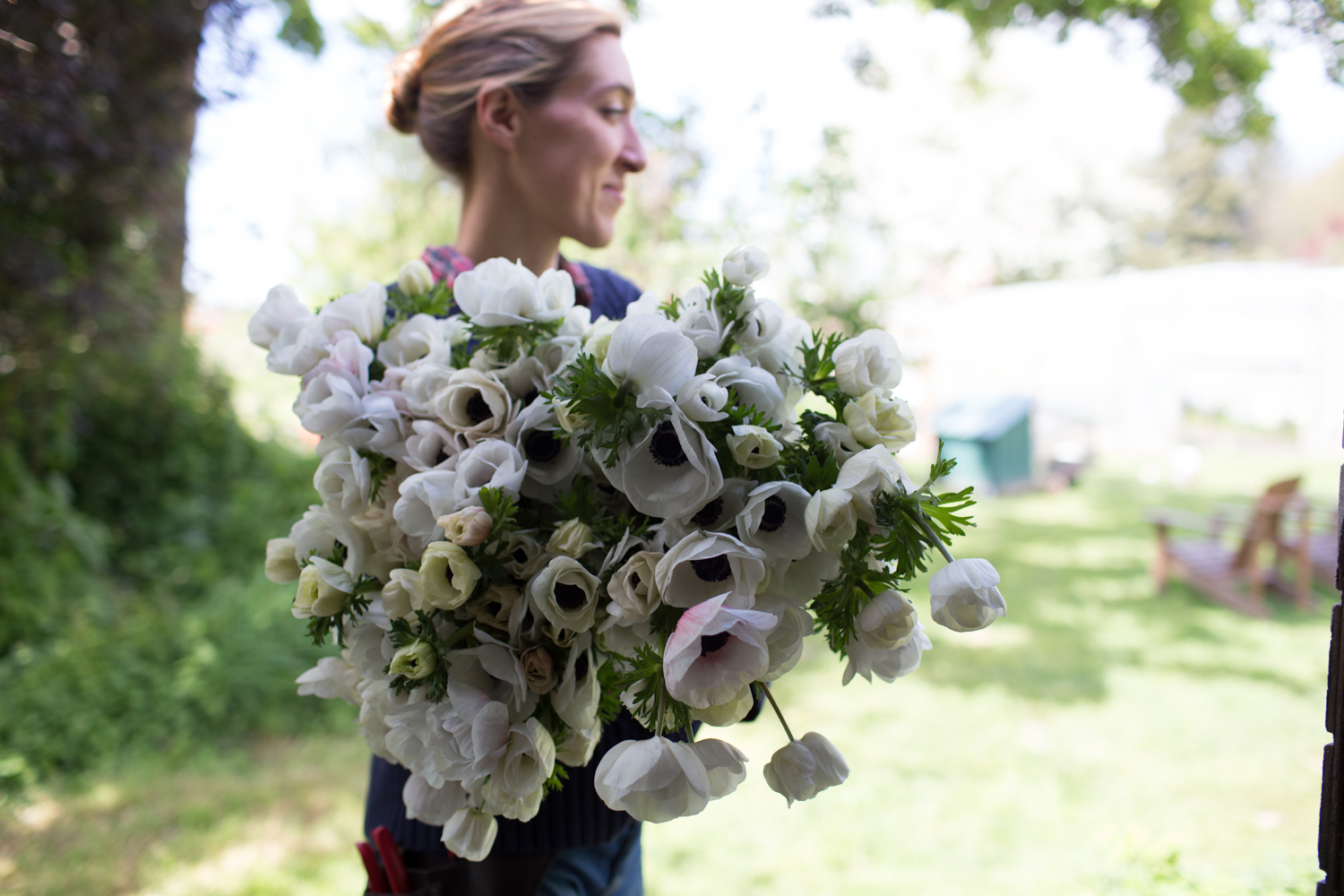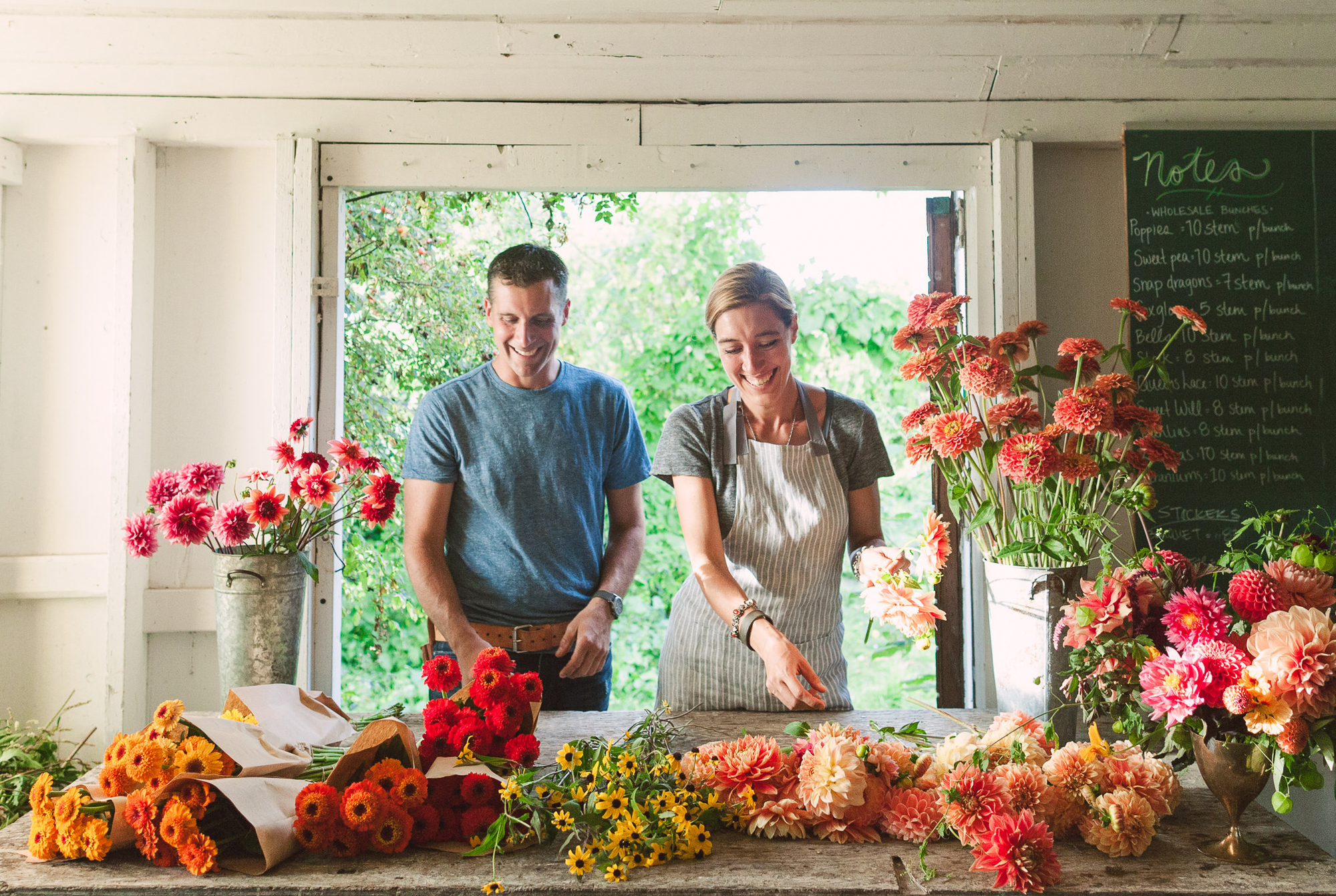No cutting garden is complete without at least one row of fragrant, nostalgic sweet peas. I’ve been growing them for what seems like a lifetime now, and they were what got me into this crazy flower farming adventure in the first place. Each spring as they climb their trellises, it’s like seeing my dear old friends once again.
What You Will Need
Method
- In warmer regions where winter weather is mild, sow sweet peas in autumn. Everywhere else, sow in late winter/early spring. Soak your seeds for 24 hours before sowing. This softens the seed coat and speeds the sprouting process by a few days.
- While the seeds are soaking, fill your planting pots with soil. Sweet peas produce a ton of roots even in the beginning, so the more room you can give them during the early stages of life, the better they will grow in the long run. I use pots that are 3½ in (9 cm) wide and deep.
- Plant two seeds per pot, poking them ½ in (1.25 cm) into the soil with your finger.
- Cover pots with a plastic dome lid to increase humidity and speed up germination. Place in a cool greenhouse or in a bright window in the house.
- Once plants are 4 to 6 in (10 to 15 cm) tall, pinch out the central growing tip, just above a leaf joint, leaving just 2 or 3 leaf nodes. This will encourage the plant to branch vigorously from the base.
- Sweet peas are heavy feeders. So, in addition to the standard soil preparation, I run a trench 1 ft (30 cm) deep down the center of the bed and fill it with compost or well-rotted manure, so that once the sweet peas send their roots down deep, there is a feast awaiting them.
- Vines grow rapidly and require a spot that gets full sun, as well as a strong structure to climb. Place tall posts roughly 8 ft (2.4 m) apart down the row and attach either Tenax Hortonova netting or 6-ft-high (1.8 m) metal fencing for them to scramble up.
- Around the last spring frost, plant out seedlings in 2 rows, one on each side of the trellis, roughly 8 in (20 cm) apart down the row. Keep them tied to the trellis to produce straight stems. Once the vines get going, you can expect over 1 ft (30 cm) of growth a week, so be sure to stay on top of tying.
- Sweet peas love water, and without consistent moisture, they won’t thrive. Keeping their thirst quenched during warm weather is crucial, so set up drip irrigation or soaker hoses as soon as you plant them. We water deeply 2 to 3 times a week.
- To prolong blooming, it’s important that you keep plants from setting seed, so be sure to harvest and deadhead the flowers frequently. For the longest vase life, pick stems that have at least 2 unopened flowers at the tip. While they can be picked when more open, their vase life won’t be as long. Sweet peas are a short-lived cut flower, lasting at best 4 to 5 days in a vase. Adding sugar or flower preservative to the water makes a big difference and will add a few extra days.

